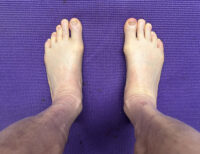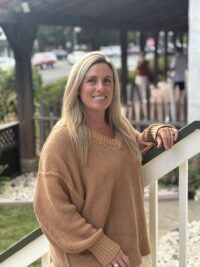January is National Mentoring Month, so the Sun’s Anna Pier sat down with the Executive Director of the Sonoma Valley Mentoring Alliance.
Our local mentoring program has received governmental and national recognition. That’s right. Kathy Witkowicki, who co-founded the original Stand By Me, and served for years as Executive Director, received the Jefferson Award. The national organization of mentoring groups also honored us, and has drawn on our successful model.
Tell me about that. Well, the national average that a volunteer stays in a mentoring relationship is between one and two years, while a Sonoma Valley match lasts an average of six to eight years. And that’s just the time that volunteers report officially. In reality, many mentoring relationships last for many years beyond high school. Mentors are included in family events like college graduations, weddings, baptisms.
Explain this great success. Certainly it is a credit to the amazing commitment of our volunteers. And it is definitely due in part to our amazing staff, and the care we take in creating a “match.” When a student is nominated to get a mentor, the facilitator at that school – we have one working at eight District campuses – gets to know the nominee. They learn their interests, their energy level, their background, and consider which new volunteer would be a good fit. A part of the matchmaking is definitely instinctive.
How does a child get chosen to participate in the program? Someone nominates him or her. A teacher, an administrator, support staff person. The general idea is that the child can probably be more successful navigating their school years if they have the support of a mentor. The family has to agree for the child to be in the program.
Is Mentoring Alliance connected to Sonoma Valley Unified? We are an independent 501.c3 but our relationship with the District is key to the success of our program. On every site our facilitator is included on the Coordination of Services Team of teachers, staff and admin, that look at what each child needs and how best to support him or her.
How did mentoring fare during Covid when classes were virtual?
We navigated it pretty adeptly. When you’re that connected, you don’t just drop someone. And our Program Director, Tina Baldry, who has been with the program since very early days, managed to put on 70 events, all designed for social distancing, for mentees and their mentors. That’s just a few less than in a normal year. The events are so important, the social interactions that build a community. The only area that was significantly affected was that we could not do much new matching.
“Stand By me” is the early name of the organization. Yes, and it still speaks to the role of the volunteer – not to pull, push, force, but to stand alongside.
Fundraising is a big part of your job, I’m sure. We just concluded our first-ever online auction. It was in lieu of the annual fundraiser we had hoped to have, to celebrate our 25 years. We were so fortunate to offer amazing auction lots. Community members with means and opportunity gave extremely generously. It opened in early November and had an exciting, fast-bidding close on December 15. We raised $140,000. There are so many really worthy nonprofits in Sonoma Valley, so I’m grateful to donors when they choose to support Mentoring Alliance.
And the other big part of your job? Recruiting mentors. I think everyone could use a mentor. I have a mentor – it is Kathy Witkowicki.
Talk about the issue of diversity, and the potential that one culture is taking a dominant role to the mentee’s culture. We are aware of this issue. The Hanna Institute has published an important paper on this issue, Fortalezas, based on findings from a large survey in the Latinx community. We recently received some Catalyst Funding for bilingual outreach. It is important for us to be more accessible to the Latinx community. It would be fantastic to have more Latinx mentors. I am hopeful that the mentor relationship acts as a connector between the two communities. In fact, mentors often say they get so much more than they give.
Tell me how you came to Sonoma. We moved here 22 years ago, from Boston, via San Francisco. My husband and I did a day trip and he fell in love with it. We moved soon thereafter, and both of our children were born here, and are SV High grads. Though sometimes I miss Boston, I have amazing friends in Sonoma.
Your childhood dream? To be a teacher. I was also deeply influenced by my mother’s volunteer work fundraising for the national Make a Wish Foundation and for Crossroads summer camps for inner city kids. She is my role model.










Be First to Comment